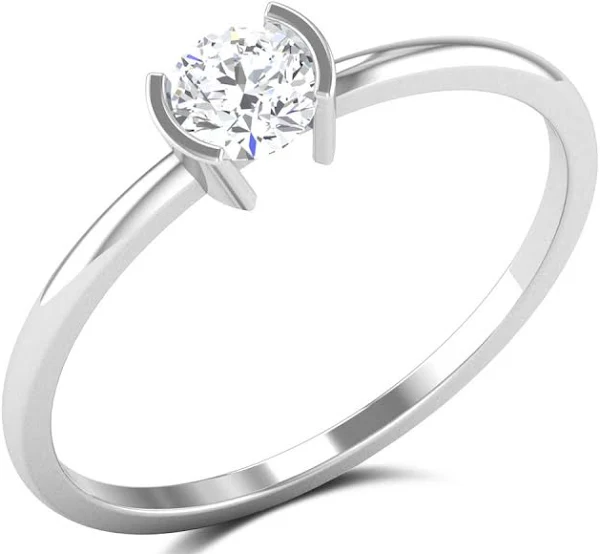Engagement rings have become a universal symbol of love and commitment, but their significance and styles vary widely across different cultures. From simple bands to elaborate gemstones, the engagement ring serves as a reflection of not just personal taste but also cultural heritage and traditions. This article explores the diverse styles and cultural meanings behind engagement rings around the world.
A Brief History of Engagement Rings
The tradition of giving engagement rings dates back thousands of years. Ancient Egyptians are often credited with the first use of rings as symbols of eternal love, using materials like reeds and leather. The circle of a ring symbolizes eternity, with no beginning or end, making it a powerful emblem for love.
In ancient Rome, betrothal rings were made from iron, symbolizing strength and permanence. The introduction of gold and precious stones marked a shift in the material used for engagement rings, particularly in the Middle Ages, when diamond rings became popular among the aristocracy.
The Engagement ring you choose is one of the most exciting and important choices you’ll ever have to make. An engagement ring is a sign of love and loyalty. At Carat Diamonds, we have a beautiful selection of engagement rings to fit any style or personality. Our lab-grown diamonds are just as beautiful and brilliant as real diamonds, but they cost less. They can be used in traditional solitaires or more modern halo designs. Let us help you find the right ring that keeps shining for a lifetime and tells the story of your love. Check out our selections right now!
Western Engagement Rings: Diamonds and Beyond
In Western cultures, the engagement ring is typically a diamond ring, popularized by De Beers’ marketing campaign in the 20th century that famously proclaimed, “A diamond is forever.” The tradition usually involves a solitaire diamond set in gold or platinum. The choice of a diamond is often linked to its symbolism of purity, strength, and enduring love.
While diamonds remain the most popular choice, many couples now opt for alternative gemstones such as sapphires, emeralds, and even moissanite. This shift reflects changing values, with a focus on individuality and sustainability. Vintage and antique rings are also gaining popularity, as they carry unique stories and historical significance.
Middle Eastern Engagement Rings: A Blend of Tradition and Modernity
In many Middle Eastern cultures, engagement rings are lavish and often include intricate designs and multiple stones. The choice of gemstones can be influenced by cultural beliefs; for example, some may choose rubies for love and passion, while others may select emeralds for fertility and protection.
In countries like Turkey, the engagement ceremony is called “söz kesme,” during which the groom presents a ring to the bride, symbolizing his commitment. The ring is often accompanied by other gifts, such as gold jewelry, which is a sign of prosperity and status.
Indian Engagement Rings: Significance of Gold and Gemstones
In India, engagement ceremonies are rich with customs and rituals. Engagement rings, or “mangalsutra” in some regions, are typically made of gold and may incorporate various gemstones believed to bring good fortune. Gold holds a special significance in Indian culture, representing wealth and prosperity.
Traditionally, the groom’s family gifts the bride a variety of gold jewelry, including the engagement ring, during the engagement ceremony. The ring often features intricate designs that symbolize various cultural motifs. Moreover, the choice of gemstones can vary depending on regional beliefs; for instance, sapphires are thought to bring wisdom, while diamonds symbolize strength.
East Asian Engagement Rings: Symbolism and Simplicity
In countries like China and Japan, engagement rings are often more understated than in Western cultures. In China, the engagement ring is not as prominent a tradition, and couples may exchange gifts or symbolic items instead. However, when rings are given, they tend to be simple bands or adorned with small diamonds or jade, which symbolizes purity and protection.
In Japan, the engagement ring is known as “konyaku,” which translates to “binding.” It usually features a single diamond set in a simple band, reflecting the couple’s desire for a long-lasting bond. The focus is on simplicity and functionality, aligning with the cultural aesthetic of minimalism.
African Engagement Rings: Cultural Diversity and Symbolism
Africa is home to a multitude of cultures, each with its own unique engagement traditions. In many West African countries, such as Nigeria, the bride price is a significant aspect of the engagement process, with families negotiating gifts that may include gold or diamond rings.
In some cultures, the engagement ring may be a symbol of the groom’s commitment, while in others, it represents the family’s acceptance of the union. In South Africa, for example, the engagement ring, often made of gold or platinum, is a representation of the bride’s status and wealth. It is common for the engagement to be a public affair, celebrated with large gatherings and traditional ceremonies.
South American Engagement Rings: Rich Colors and Traditions
In South America, engagement rings are often vibrant and richly adorned. In countries like Brazil and Argentina, the engagement ring might feature colorful gemstones such as amethyst, topaz, or even emeralds, reflecting the region’s rich natural resources and cultural diversity.
In some cultures, engagement rings are not as prominent, with couples focusing instead on the wedding band. However, in more modern contexts, many couples are embracing the tradition of engagement rings, often opting for unique designs that showcase personal style and creativity.
Modern Trends: Personalization and Ethical Choices
As global awareness around ethical sourcing grows, many couples are becoming more conscious of the origins of their engagement rings. Ethical diamonds, lab-grown stones, and recycled metals are becoming increasingly popular. Customization is also on the rise, with many couples choosing to design their own rings, incorporating personal elements that tell their unique love story.
The desire for sustainability and individuality is transforming the engagement ring market, allowing couples to express their values and preferences through their choice of materials and designs.
Conclusion
Engagement rings serve as a beautiful reminder of love and commitment, but their meanings and styles are deeply influenced by cultural backgrounds and traditions. From the opulent designs of the Middle East to the simplicity of East Asia, each culture brings its unique perspective to this age-old tradition. As globalization continues to shape relationships, the engagement ring is evolving, incorporating elements of sustainability and personalization while remaining a symbol of enduring love. Whether ornate or understated, the engagement ring will undoubtedly continue to be a cherished token of commitment for generations to come.


